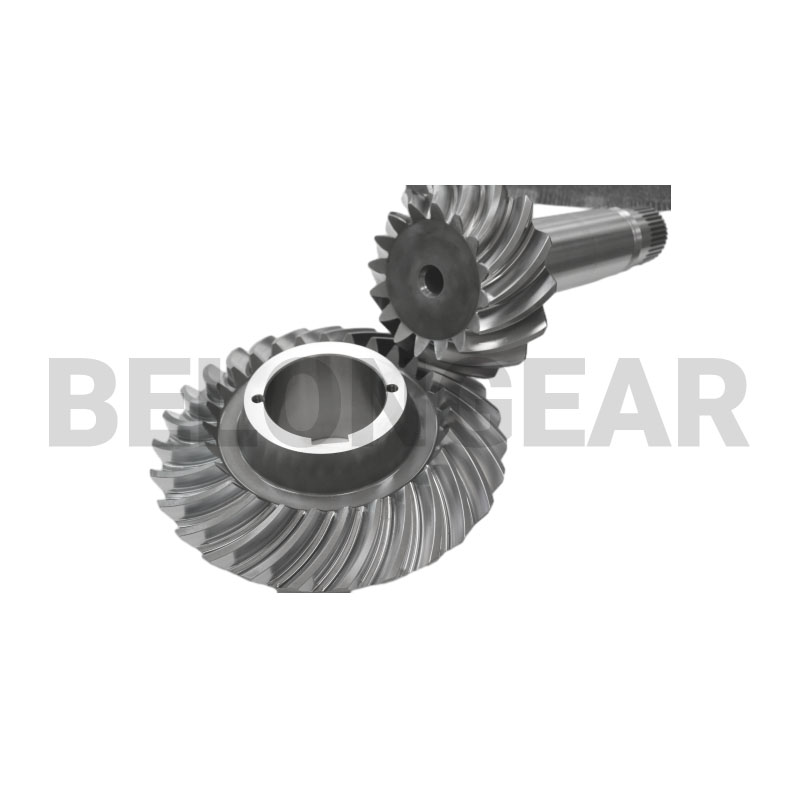Spiral bevel gears transmission
Spiral bevel gear transmission is a common gear transmission, which is usually used in high precision and high load applications.
一. Fundamental
The spiral bevel gear transmission consists of a conical gear with helical teeth and a conical gear with helical teeth meshing with it. Their axes intersect at one point and form an angle. Its transmission method is to convert power into torque through friction.
In the process of gear meshing, the helical teeth of the two gears are different, so a relative movement will be generated, and this relative movement will cause the relative position of the shafts of the two gears to change. This change is called “axial movement”, and it will cause a certain impact on the accuracy of the gear transmission. Therefore, it is necessary to consider the influence of axial movement when designing spiral bevel gear transmission to ensure the accuracy of transmission.

二. Structure
The construction of spiral bevel gear transmission usually adopts a structure composed of two conical gears. One of the gears is called the “spiral bevel gear” and has helical teeth on the tooth surface, and the other gear is called the “driven bevel gear” and has helical teeth on the tooth surface, but it can move along the axis.
In the spiral bevel gear transmission, due to the helical shape of the gear, when the spiral bevel gear and the driven bevel gear mesh with each other, a radial force will be generated between them, and this force will cause the driven bevel gear to move in the axial direction .
In some high-precision applications, the spiral bevel gear transmission is usually equipped with a structure called “front and rear bearings”, which can reduce the axial movement, thereby improving the transmission accuracy. The front and rear bearings are composed of a set of bearings and a center bracket, which can effectively bear the axial force of the driven bevel gear.

三. Features
The characteristics of spiral bevel gear transmission mainly include the following aspects:
1. High precision: The gear tooth surface of the spiral bevel gear transmission is helical, which can reduce the contact stress of the tooth surface, thereby improving the transmission accuracy.
2. High load: The radial force acting area of the spiral bevel gear transmission is large, which can bear a large load

3. Low noise: The meshing method of thespiral bevel gear transmission can reduce the contact noise of the tooth surface, and because of the helical shape of the gears, the friction between them is also relatively small, so the noise during transmission is relatively low.
4. Transmission of large power: Spiral bevel gear transmission is suitable for some applications that need to transmit large power, and they are widely used in metallurgy, mining, machine tools, aerospace and other fields.
Post time: Aug-14-2023




